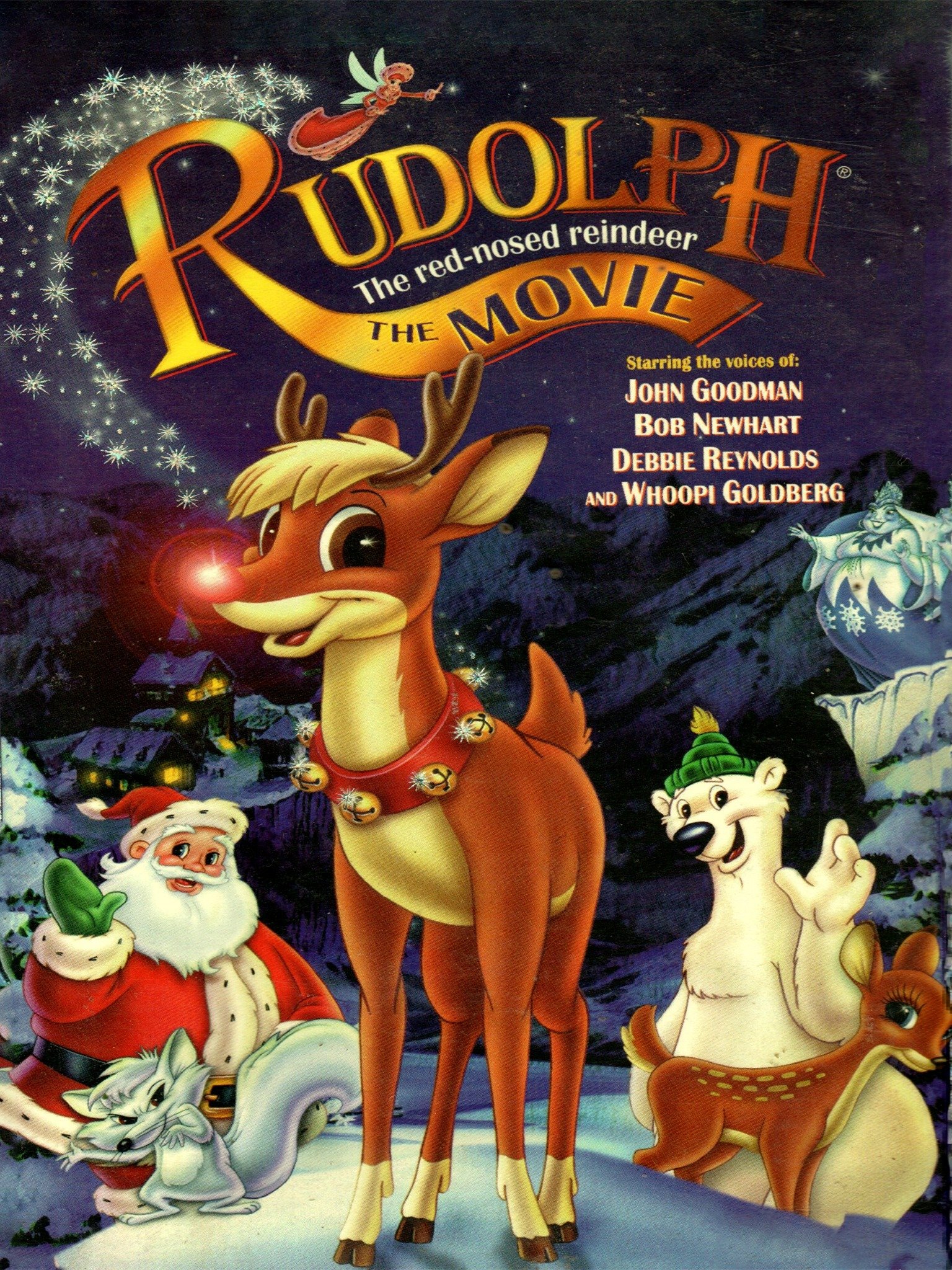Rudolph the Red-Nosed Reindeer: A Cultural Icon and Timeless Tale
Related Articles: Rudolph the Red-Nosed Reindeer: A Cultural Icon and Timeless Tale
Introduction
In this auspicious occasion, we are delighted to delve into the intriguing topic related to Rudolph the Red-Nosed Reindeer: A Cultural Icon and Timeless Tale. Let’s weave interesting information and offer fresh perspectives to the readers.
Table of Content
Rudolph the Red-Nosed Reindeer: A Cultural Icon and Timeless Tale

Rudolph the Red-Nosed Reindeer, a character born from a 1939 promotional poem, has transcended his humble origins to become a global cultural icon, synonymous with Christmas cheer. His story, a testament to the power of embracing individuality and overcoming adversity, has resonated with generations, captivating audiences through various mediums, including television specials, films, and merchandise. This article delves into the evolution of Rudolph, exploring his impact on popular culture, his enduring appeal, and the valuable lessons embedded within his narrative.
The Genesis of a Legend:
Robert L. May, a copywriter for Montgomery Ward, penned the poem "Rudolph the Red-Nosed Reindeer" in 1939 as a promotional tool for the department store. The poem, aimed at captivating children, introduced the world to a young reindeer with a luminous red nose, ostracized by his peers for his unique trait. However, when a blizzard threatened Santa’s Christmas Eve delivery, Rudolph’s glowing nose illuminated the path, saving the day and earning him a place of honor in Santa’s sleigh.
The poem’s popularity was immediate, leading to its widespread distribution, becoming a cherished Christmas tradition. In 1949, Gene Autry recorded a song based on the poem, further solidifying Rudolph’s status as a Christmas icon.
The Television Special and Beyond:
In 1964, Rudolph’s journey took a significant leap with the creation of the animated television special "Rudolph the Red-Nosed Reindeer." Produced by Rankin/Bass Productions, the special featured stop-motion animation and a catchy musical score, quickly becoming a Christmas staple. The special introduced a cast of memorable characters, including the mischievous Abominable Snowman, the sarcastic Hermey the Elf, and the endearing Yukon Cornelius, enriching the narrative and adding depth to the original poem.
The success of the television special spawned numerous sequels, spin-offs, and adaptations, solidifying Rudolph’s cultural influence. The character has appeared in films, video games, books, and countless merchandise, ensuring his presence in the hearts and minds of audiences across the globe.
The Enduring Appeal of Rudolph:
Rudolph’s enduring appeal lies in his relatable story, a universal theme of overcoming adversity and finding acceptance. He represents the power of embracing one’s individuality, even when faced with ridicule and isolation. His journey from outcast to hero inspires children and adults alike, reminding us that our differences can be our greatest strengths.
The special’s themes of friendship, courage, and kindness resonate deeply, particularly during the holiday season. Rudolph’s story serves as a reminder that everyone has a unique contribution to make, and that embracing our differences can lead to unexpected rewards.
The Importance of Rudolph’s Narrative:
Rudolph’s story transcends its simple narrative, offering valuable lessons for individuals of all ages. It highlights the importance of empathy, understanding, and accepting those who are different. It encourages individuals to embrace their uniqueness, recognizing that their differences can be their greatest assets.
Furthermore, Rudolph’s narrative emphasizes the importance of perseverance and resilience. Despite facing rejection and ridicule, he never gives up on his dreams, ultimately achieving success and proving his worth. This message resonates with children and adults alike, inspiring them to overcome obstacles and strive for their goals.
FAQs about Rudolph the Red-Nosed Reindeer:
1. What is the origin of Rudolph’s red nose?
The poem and the television special do not provide a definitive explanation for Rudolph’s red nose. However, it is generally attributed to a genetic anomaly, a unique trait that sets him apart from other reindeer.
2. Why is Rudolph’s nose so bright?
The poem describes Rudolph’s nose as "shining bright," and the television special portrays it as glowing with a radiant light. This is often interpreted as a magical quality, allowing Rudolph to illuminate the path for Santa’s sleigh.
3. What is the significance of Rudolph’s name?
The name "Rudolph" is of Germanic origin, meaning "famous wolf." This name choice, perhaps ironic given Rudolph’s gentle nature, adds a layer of intrigue to the character.
4. Is Rudolph the Red-Nosed Reindeer a real character?
Rudolph is a fictional character, created by Robert L. May as a promotional tool for Montgomery Ward. However, his story has become so ingrained in popular culture that he is often perceived as a real figure.
5. Why is Rudolph’s story so popular?
Rudolph’s story resonates with audiences due to its universal themes of overcoming adversity, embracing individuality, and finding acceptance. His journey from outcast to hero provides a relatable and inspiring narrative for people of all ages.
Tips for Understanding and Appreciating Rudolph:
- Read the original poem: The poem "Rudolph the Red-Nosed Reindeer" provides the foundation for the character’s story, offering a glimpse into his origins and the initial inspiration for his unique trait.
- Watch the television special: "Rudolph the Red-Nosed Reindeer" is a classic for a reason, offering a visual representation of the character’s journey and introducing a cast of memorable supporting characters.
- Explore the various adaptations: From films to video games, Rudolph’s story has been adapted into various mediums, offering different interpretations and perspectives on his character.
- Reflect on the themes: Rudolph’s story explores universal themes of individuality, acceptance, and overcoming adversity, offering valuable lessons for individuals of all ages.
Conclusion:
Rudolph the Red-Nosed Reindeer has transcended his humble origins as a promotional character to become a beloved cultural icon, a testament to the power of storytelling and the enduring appeal of universal themes. His narrative, filled with messages of acceptance, perseverance, and the importance of embracing individuality, continues to inspire generations, reminding us that our differences can be our greatest strengths. Rudolph’s legacy as a symbol of Christmas cheer and a reminder of the power of kindness and acceptance will likely endure for many years to come.








Closure
Thus, we hope this article has provided valuable insights into Rudolph the Red-Nosed Reindeer: A Cultural Icon and Timeless Tale. We appreciate your attention to our article. See you in our next article!